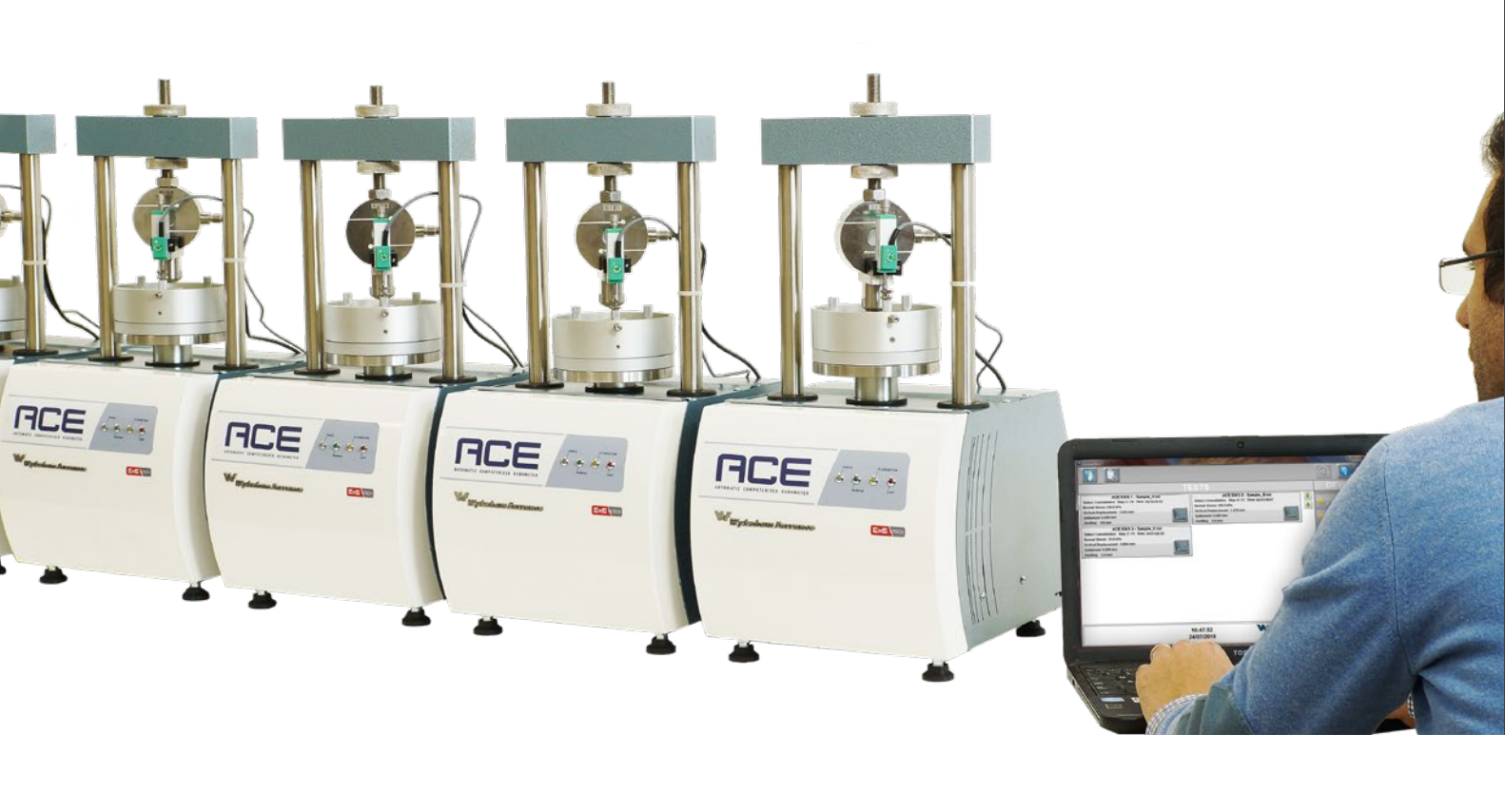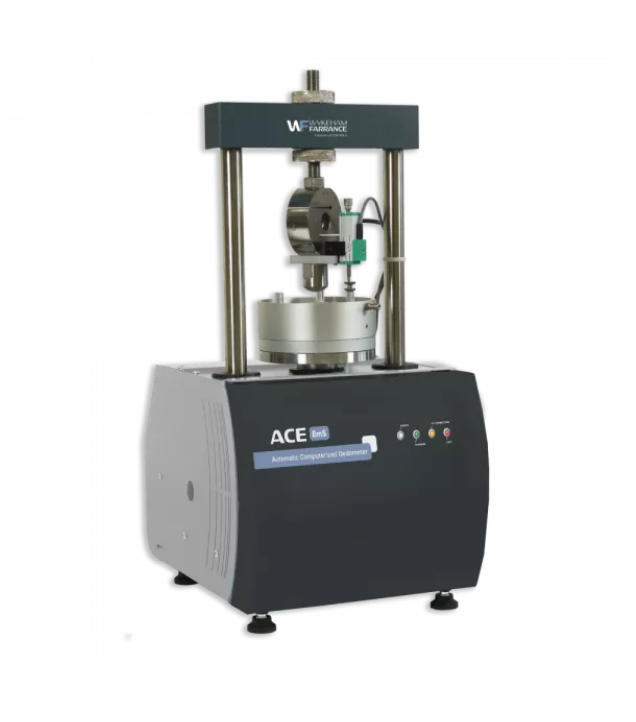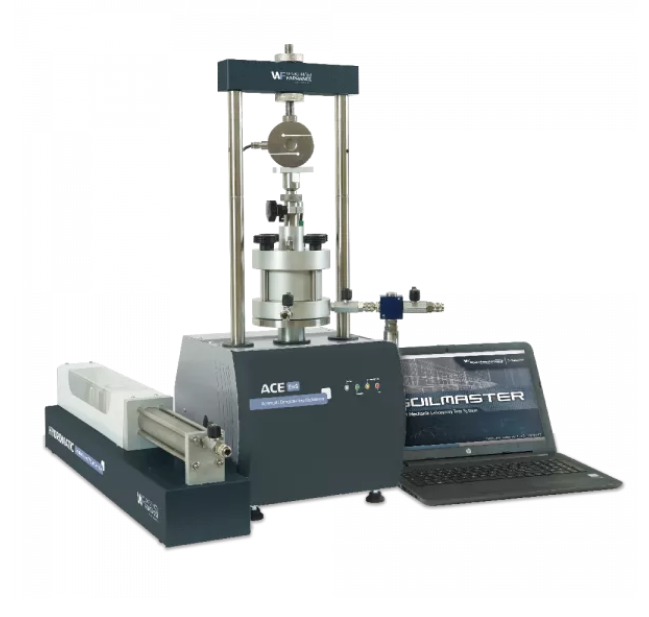
Your Quick Guide to Consolidation Testing
According to the “father of soil mechanics”, Karl von Terzaghi, consolidation is “any process which involves a decrease in water content of saturated soil without replacement of water by air”. More generally, consolidation refers to the process by which soils change volume in response to a change in pressure, encompassing both compaction and swelling. [extract from Wiki]
In this article, we will provide an overview of Soil Consolidation Testing and we will:
- Define what is consolidation testing,
- Outline why should you perform this test,
- Go through the typical test durations,
- Explain different types of consolidation tests and methods; and,
- Detail equipment requirements.
Consolidation test of soil — what is it?
Consolidation tests are typically performed on a saturated cylindrical soil specimen and are designed to measure the amount and the rate at which a sample will change in height when subjected to a load.

It can be removed when a load is applied on a low permeability soil, it is initially supported by the water held within the porous of soil sample. As the load increases, a rapid increase of pore water pressure occurred inside the sample. This excess pore water pressure is dissipated as water drains away from the soil’s voids and the pressure is transferred to the soil skeleton which is gradually compressed, resulting in settlements.
To carry out the consolidation of soil, the sample must be constrained radially (normally with a stainless-steel cutting ring) and subjected to a vertical load (stress). The vertical height changes during the test, however the diameter of the sample needs to remain the same throughout.
Why Consolidation testing?
Consolidation test is typically performed for evaluating soil compressibility. The incremental applied stress that causes consolidation may be due to either natural loads (e.g. sedimentation process), or human-made loads (for example in the construction of a building or an embankment above a soil mass) or even the decrease of the ground water table.

In particular consolidation tests can be used for answering the following questions:
- Will the settlement be short or long term?
- What amount of settlement will ultimately take place?
- Are there, during a construction phase, any non-uniform soil conditions that could result in an uneven settlement?
- How can a deep lying stratum of compressible material influence settlement characteristics?
- Can we estimate of the rate of consolidation?
How long does the consolidation process last?
The duration of the consolidation process is a critical issue and mainly depends on the permeability of the soil being subjected to the load and on the drainage paths. In general, consolidation in sandy soils is quick (occurring possibly immediately during construction) whereas the process may last for many years or even decades in clay soils.
The consolidation procedure is commonly separated into 3 stages:
- Initial consolidation: A quick loss of the soil mass volume following the application of an external load that compresses the air inside the soil’s voids.
- Primary consolidation: Soil settlement during which the excess pore water pressure is transferred to the soil’s skeleton.
- Secondary consolidation: A further soil settlement that occurs after the primary consolidation which affects the soil’s structure as the soil is being subjected to a near constant load. This process is commonly referred to as “creep”.
Types of Consolidation tests
Geotechnical laboratories can measure the consolidation properties of a soil in several ways:
One-dimensional Consolidation test
This is the simplest and most common method and is commonly referred to as consolidation test, oedometer test, and incremental loading oedometer. In this case, the lateral strain of the soil mass is neglected; applying different step of vertical load. These are commonly undertaken in laboratories due to the relative ease of the testing process and the simplicity of the equipment required.
Constant Rate of Strain (CRS) Consolidation test
In addition to the most common incremental loading consolidation, various tests can be performed measuring the magnitude and rate-of-consolidation of saturated cohesive soils using continuous controlled-strain axial compression that also allow the excess moisture to dissipate. Consolidation tests using CRS cells are quicker than the standard incremental loading test. Despite being quick to perform, results are as accurate as with other methods. Using CRS cells, it is possible to monitor the excess pore pressure continually so tests can run at maximum speed further increasing test specimen throughput.
Hydraulic Consolidation test
The incremental loading consolidation test can also be performed with a different device, hydraulic consolidation cell that applies vertical force using hydraulic pressure. This type of cell allows you to get more information to be gathered from the soil sample. (e.g. low permeability by hydraulic pressure).
How do you perform the Consolidation test?
Incremental loading – Standard
A typical consolidation system for one dimensional consolidation testing can be seen below.
In a standard front loading oedometer system, the frame (oedometer) is used to apply a vertical stress to the sample using dead weight that’s added to lever arm.
You can configure your oedometer system as:
- Analog: this involves the use of dial gauge to measure the vertical settlement
- Electronic: with this configuration, you will need to connect a displacement transducer to the automatic data acquisition system.
The typical configuration requires the following components:
- Oedometer: front loading oedometer made by strong aluminium alloy frame
- Bench: long enough to fit three 3 oedometers
- Consolidation cell: It contains a cutter made from steel that allows the sample to be vertically loaded while preventing the sample from radial deformation. There are also porous stone so that allow moisture to dissipate from the sample and a loading cap to apply a vertical stress. Standard consolidation cells’ diameter vary from 50.47 to 112.80mm and are normally used with front loading oedometer even though they can also be used with an automatic system.
- Displacement transducer (dial gauge): for vertical settlement measurements in case of displacement transducer (electronic version) it has to be associated to a dedicated data acquisition system
- Set of weights: these are used to apply different step of charge to the soil sample.
 |
 |
| Set of three oedometers with analog configuration |
Set of three oedometers with electronic configuration |
Fully automatic incremental loading
Incremental loading can also be performed with the same consolidation cells in automatic mode using an automatic system; its stepper motor moves the sample up against a load cell to apply a vertical stress to the sample.
A PID closed-loop control delivers fast, smooth and accurate loading holding through the multiple test steps.
This is achieved with a load cell that measures the vertical load being applied to the specimen. One or several devices are usually controlled via PC software allowing the complete control and acquisition during the entire test.

You can pre-set all test conditions with the software and then let each oedometer unit perform the entire test independently and automatically delivering consistency across all testing procedures and allowing you to perform other tasks while the test is running.
In order to increase the sample throughput, the software allows you to set up pre-set criteria for skipping in automatic mode to the next step of charge such as:
- Elapsed time
- Consolidation rate
- Swelling monitoring
CRS – Constant Rate of Strain
You can also use an automatic oedometer capable of providing both stress and strain control to perform the CRS test. Here, the soil is subjected to uniform deformation; axial force, axial deformation and base excess pressure being measured during this consolidation process.
From the automatic oedometer you’d need to add the additional items:
- CRS cell: designed to restrain laterally and drain axially the sample. It offers also the possibility of measuring the excess pore pressure.
- Extension rods: to obtain the correct vertical daylight for fitting a CRS cell
- Pressure transducers: A pore pressure transducer is used to measure the pressure changes in the sample as the vertical stress is applied.
- One water pressure line: the pressure controller provides a back pressure. This allows the sample to be saturated before the vertical stress is applied to the sample.

Additional equipment is also required such as a de-aired water system, tubing to connect the cell and pressure system together and specimen preparation equipment.
Hydraulic Consolidation – Hydrocon
Below is a typical Hydrocon configuration:
- Hydrocon: Hydraulic Consolidation Cell for saturated soil test; two testing configurations are available manual and electronic — with automatic data acquisition. During the test, back and axial pressures are applied and vertical settlement, pore pressure and variation of volume are measured. A specific Hydraulic Consolidation Cell for unsaturated soil test is also available, in this case air pressure is also applied. See the figure below:

- Displacement transducer: for measuring vertical settlement on the soil sample
- Pore pressure transducer: used to measure the pressure changes in the sample as the vertical stress is applied.
- Pressure system: two pressure lines are required, one for the vertical load application and the second one, for back pressure line.
- Volume change device: for measuring the amount of the water that penetrates the sample.
Additional equipment is also required such as a de-aired water system, tubing work to connect the cell and pressure system together and specimen preparation equipment.
We hope you find this post informative. If you need to clarify anything or need any additional information, get in touch with one of our Soil Mechanics experts.



